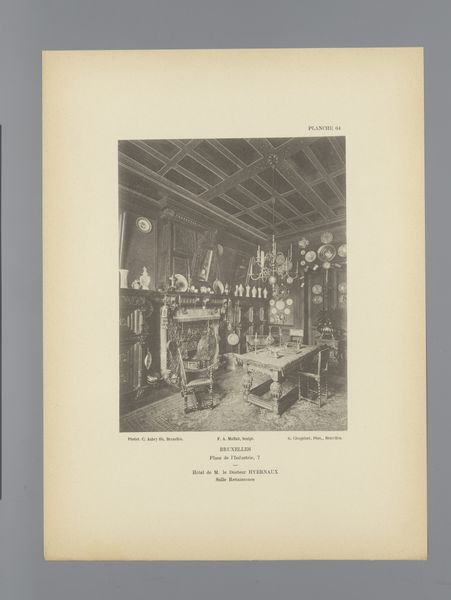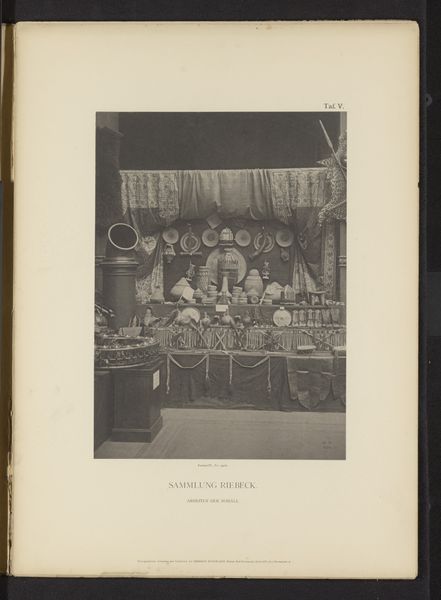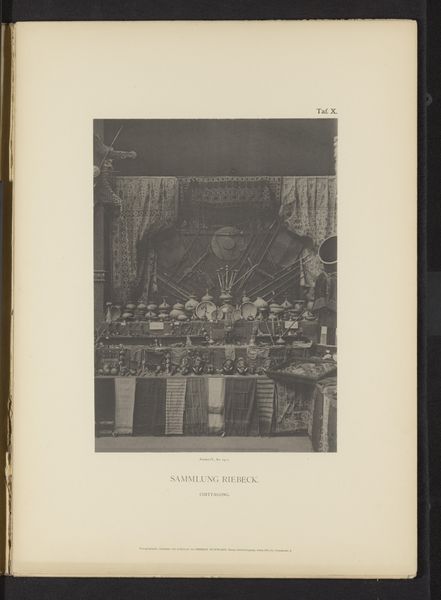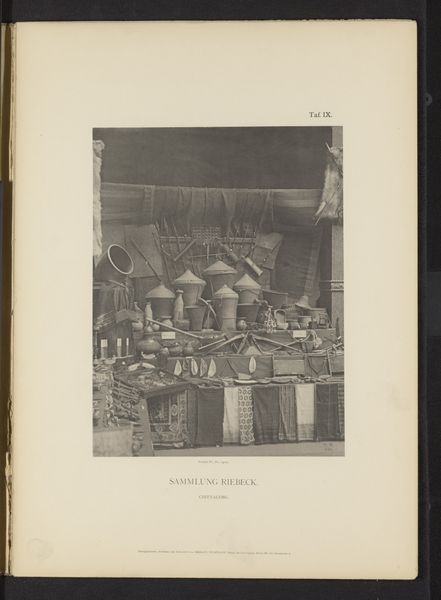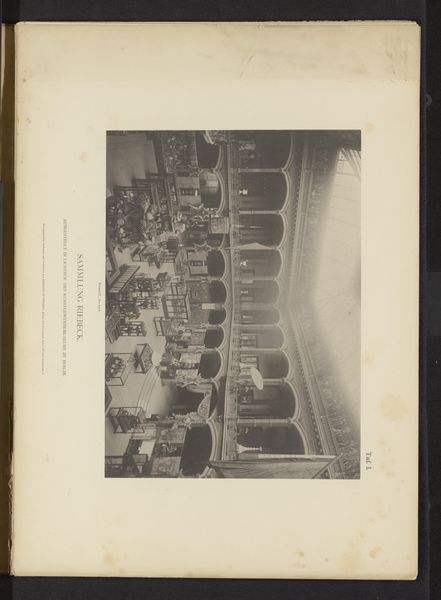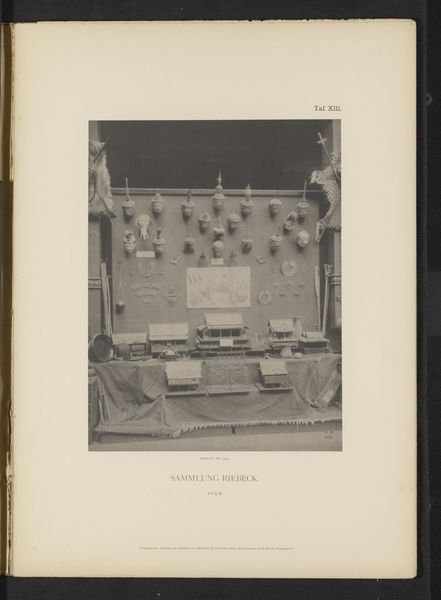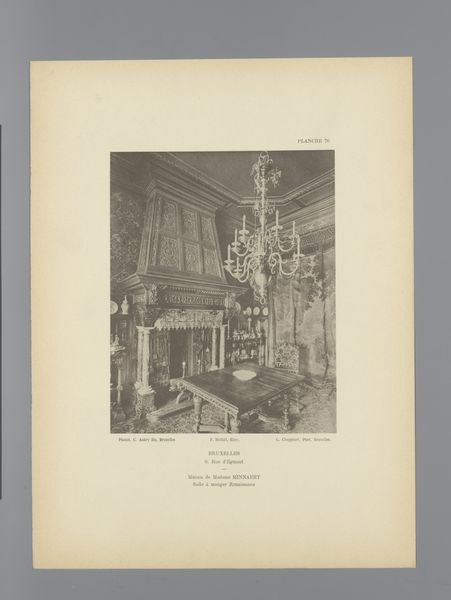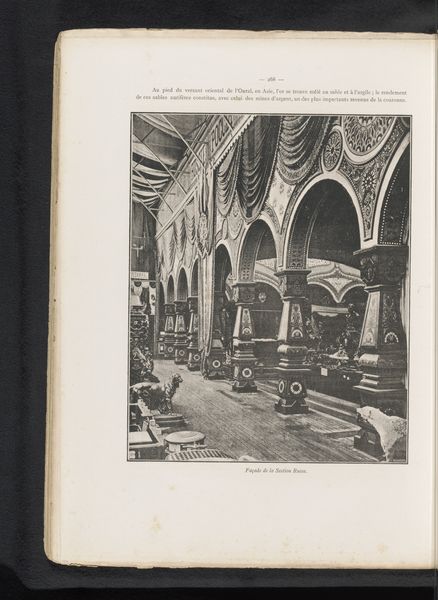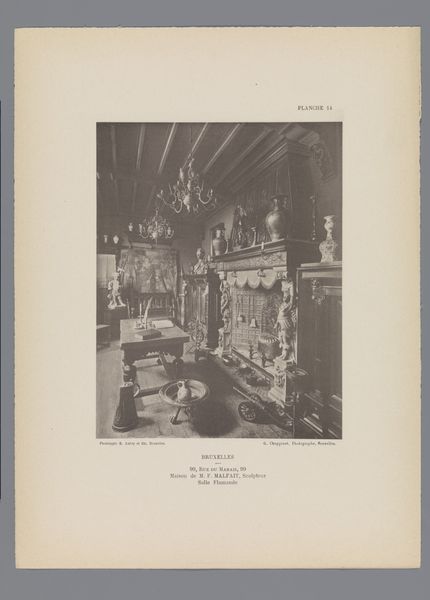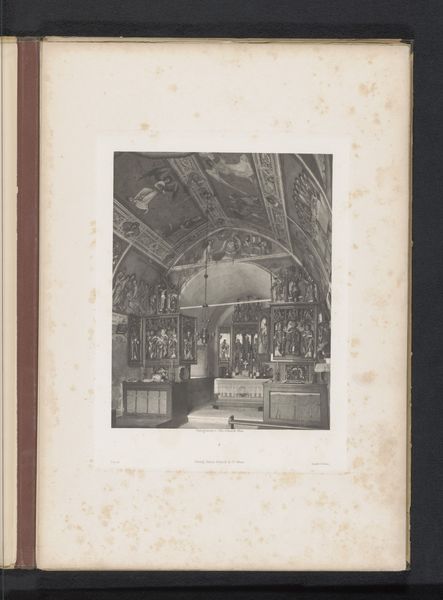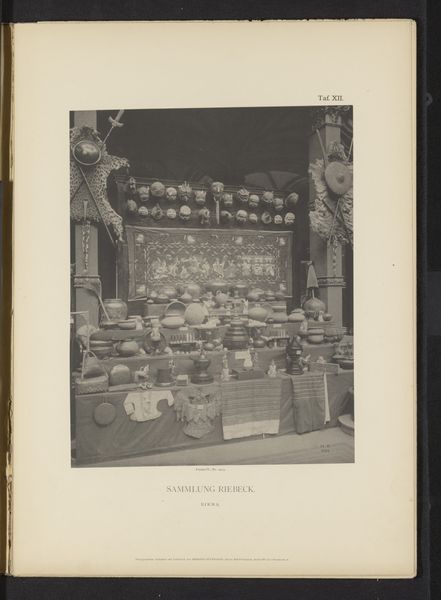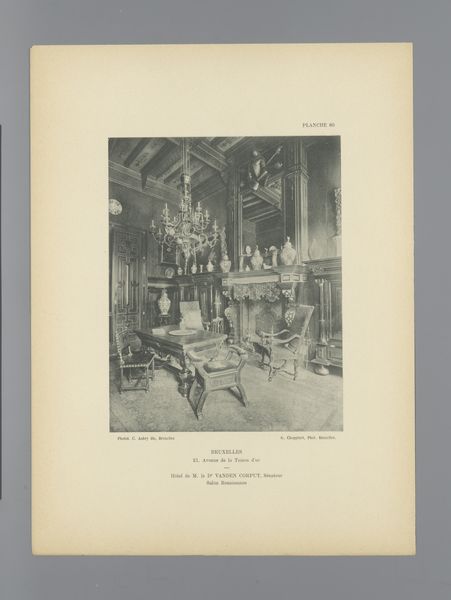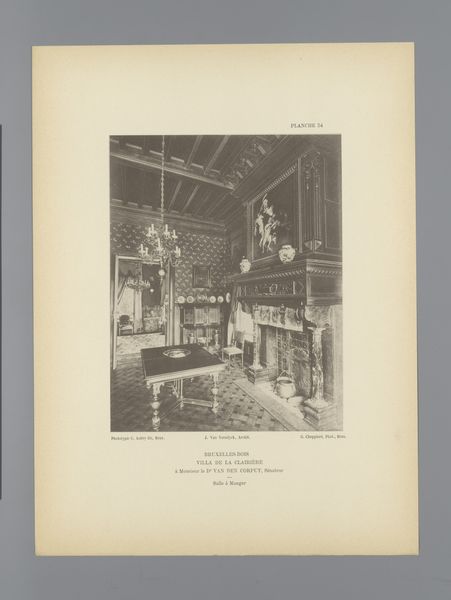
Objecten uit het Nilgirigebergte en Sri Lankaanse maskers uit de verzameling van Emil Riebeck, op de binnenplaats van het Kunstgewerbemuseum in Berlijn 1884
0:00
0:00
print, photography, gelatin-silver-print
#
still-life-photography
# print
#
asian-art
#
photography
#
gelatin-silver-print
Dimensions: height 311 mm, width 236 mm
Copyright: Rijks Museum: Open Domain
Curator: Looking at this gelatin silver print from 1884, titled "Objects from the Nilgiri Mountains and Sri Lankan Masks from the Collection of Emil Riebeck, in the Courtyard of the Kunstgewerbemuseum in Berlin", I’m struck by the density and array of objects it captures. Editor: The first thing that jumps out to me is how formally it’s staged, almost like an altar. But there’s something deeply unsettling about seeing these cultural artifacts presented in such a sterile, arguably appropriative, way. Curator: I see what you mean. It feels staged to highlight Riebeck’s collection rather than to showcase the inherent cultural weight each object carries individually. The masks, especially, loom like silent judges above the arrangement of tools, pottery, and other items. These objects come from the Nilgiri mountains of India, and Sri Lanka; the arrangement invites reflection on the psychological distance between the collector and the cultures that created them. Editor: Exactly. There's an inherent power dynamic at play. Riebeck, a German ethnologist, collected these objects during a period of intense colonialism. Each of these carefully placed artifacts represents complex societies, spiritual beliefs, and histories, now reduced to a collector's still life in a European museum setting. The print’s composition itself, the very act of photographing and cataloging, speaks to processes of documentation and control central to colonialism. Curator: The photograph itself, in its crisp detail, seems to both document and categorize. Gelatin silver prints offered a level of clarity that previous photographic processes couldn’t match. Here, that precision underscores the supposed scientific nature of Riebeck's project: a means of ordering and understanding, but one inherently shaped by Western values and expectations. Consider the objects on the second shelf— they are clearly domestic and functional, perhaps invoking, by their contrast, the exoticism of the masks. Editor: I find it deeply problematic how the masks, particularly, become decontextualized. Are these masks religious or theatrical, for healing, rituals, or protection? Divorced from their intended purpose and cultural setting, they're presented as curiosities, devoid of the vibrant traditions that give them meaning. It’s a forceful example of orientalism: these objects come to represent "otherness" through a Western gaze. Curator: Indeed, Riebeck’s arrangement offers a snapshot of late 19th-century attitudes towards non-European cultures. As we study these types of arrangements now, it prompts contemplation not only on those cultures but also on how those cultures are curated, observed, and subsequently interpreted through differing cultural lenses. Editor: Absolutely. Analyzing an image like this, so dense with complicated history, invites us to interrogate our own present-day perspectives and to ensure ethical accountability with objects that are cultural in origin.
Comments
No comments
Be the first to comment and join the conversation on the ultimate creative platform.

